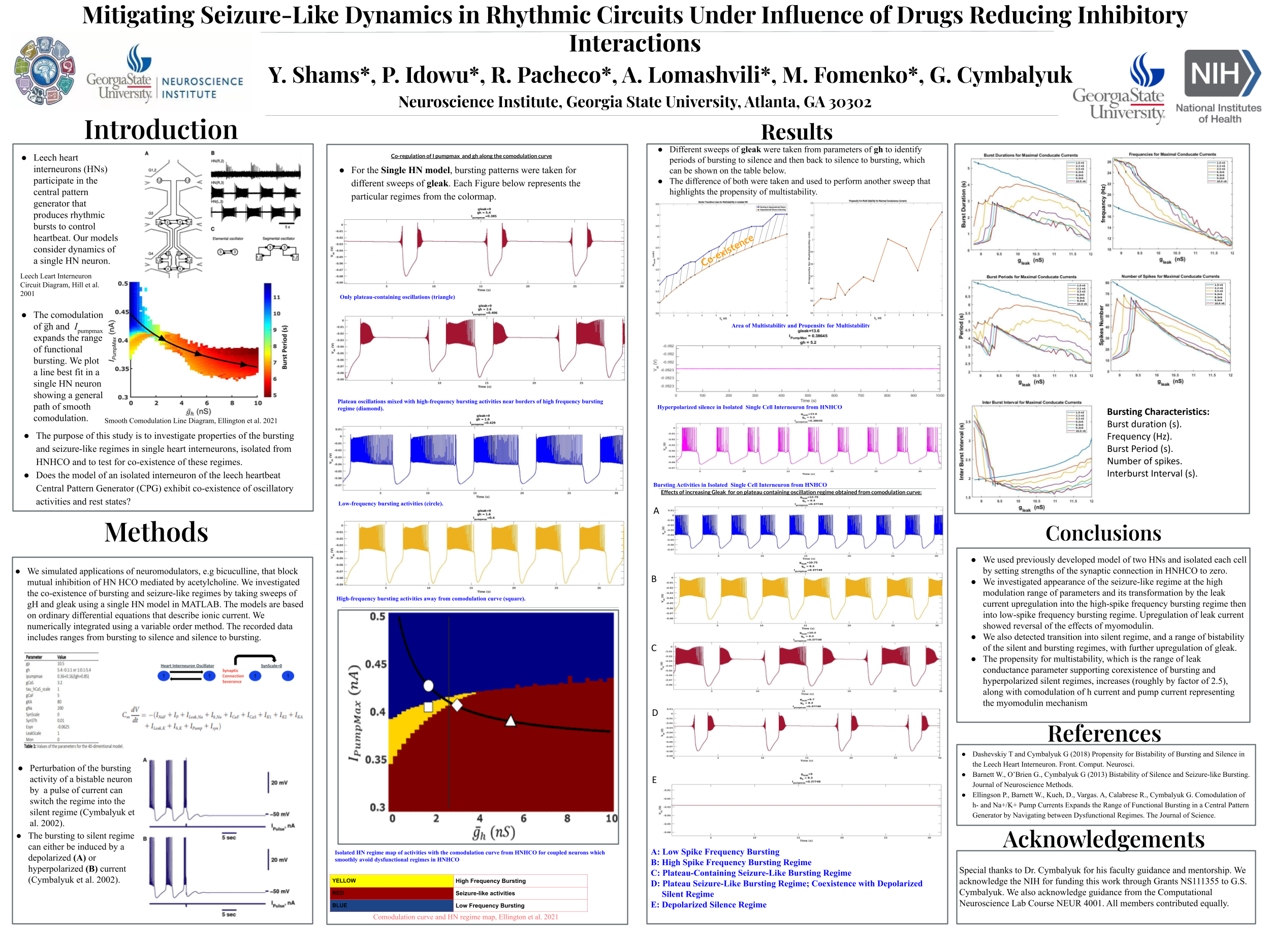Poster Presentation
In Medicinal leeches (Hirudo Sp.), leech heart Central Pattern Generator (CPG) controls the heartbeat pattern of activity (Schmidt and Calabrese 1992). This CPG is assembled as a set of pairs of mutually inhibitory heart interneurons (HN HCOs) producing symmetric alternating bursting activities within HCOs. Endogenous neuromodulator myomodulin decreases the Na+/K+ pump current and increases the hyperpolarization-activated (h-) current. This comodulation of two currents expands the functional regime of symmetrical bursting (Ellingson et al., 2021) by navigating between asymmetric bursting regime and seizure-like plateau-containing oscillations. In recent study, we found that the application of myomodulin induces additional bursting regime with almost the same period and two-times higher intra-burst spike frequency. This new regime co-exists with the basic low—frequency regime. The mechanisms underlying high spike frequency regime are not well understood.
The purpose of this study is to investigate properties of the bursting and seizure-like regimes in single heart interneurons, isolated from HNHCO and to test for co-existence of these regimes. Also, we investigated whether the model of the isolated HN interneuron exhibits co-existence of oscillatory activities and rest states. We used previously developed model of two HN neurons and for our study we separated them by gradually reducing strength of the synaptic connection down to zero. This finally produced two independent single cells with separate sets of initial conditions mimicking application of bicuculine blocking acetylcholine mediated mutual inhibition of HN HCO (Schmidt and Calabrese 1992; Cymbalyuk et al. 2002). We investigated the appearance of the seizure-like regime at the high modulation range of parameters as a result of transformation of functional regime supported by the HCO type network due to down-regulation of the strength of inhibitory synaptic coupling. We also detected bistability of the silent and bursting regimes and investigated changes of propensity for bistability as a result of neuromodulation (Dashevskiy and Cymbalyuk, 2018). These results could be applied to development of new treatments mitigating seizure-like dynamics in rhythmic circuits under influence of drugs reducing inhibitory interactions.
 CLOSE SIDEBAR
CLOSE SIDEBAR
